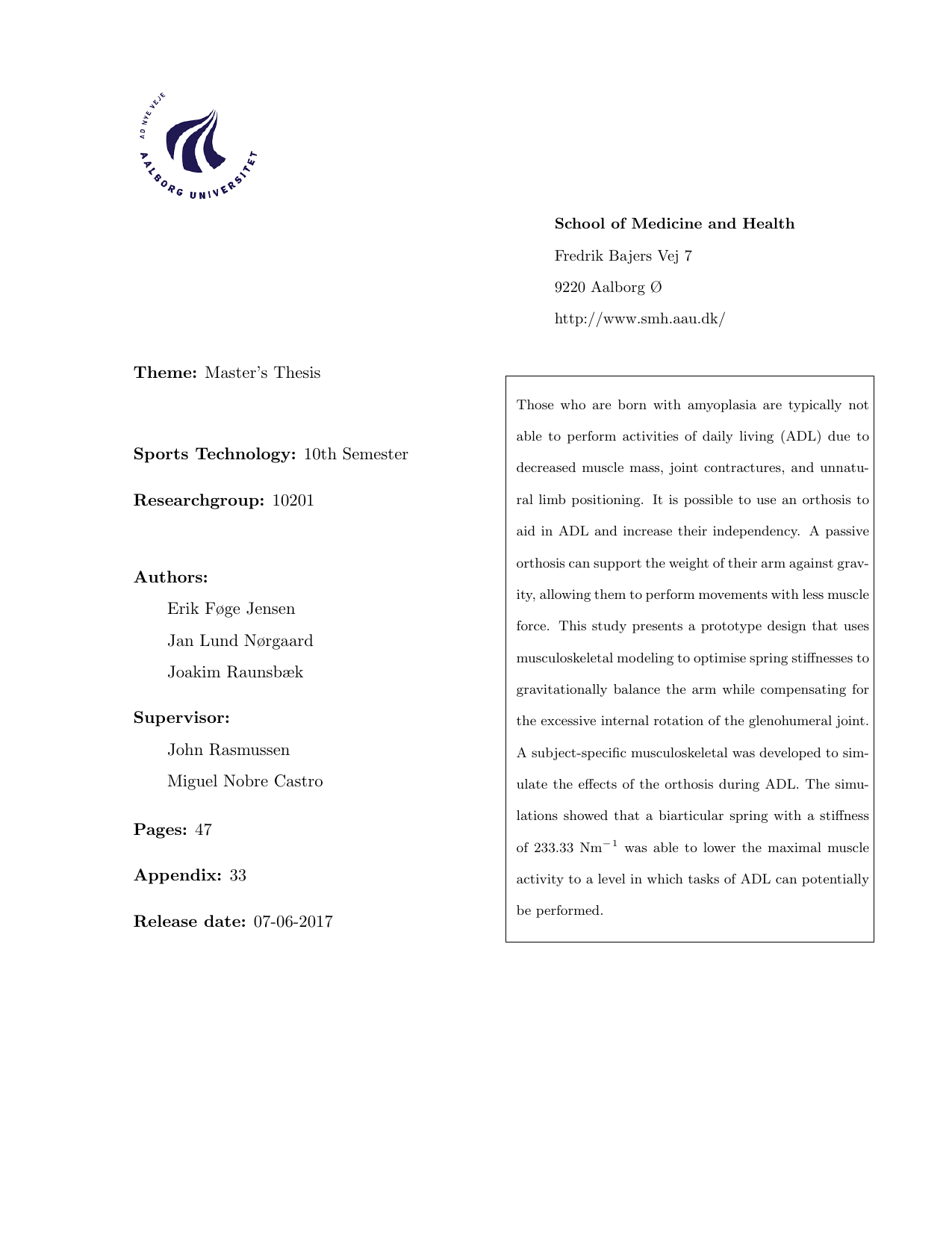
Development of a Passive Upper Extremity Orthosis for Amyoplasia
Authors
Term
4. semester
Education
Publication year
2017
Submitted on
2017-06-07
Pages
80
Abstract
Those who are born with amyoplasia are typically not able to perform activities of daily living (ADL) due to decreased muscle mass, joint contractures, and unnatural limb positioning. It is possible to use an orthosis to aid in ADL and increase their independency. A passive orthosis can support the weight of their arm against gravity, allowing them to perform movements with less muscle force. This study presents a prototype design that uses musculoskeletal modeling to optimise spring stinesses to gravitationally balance the arm while compensating for the excessive internal rotation of the glenohumeral joint. A subject-specic musculoskeletal was developed to simulate the eects of the orthosis during ADL. The simulations showed that a biarticular spring with a stiness of 233.33 Nm􀀀1 was able to lower the maximal muscle activity to a level in which tasks of ADL can potentially be performed.
Those who are born with amyoplasia are typically not able to perform activities of daily living (ADL) due to decreased muscle mass, joint contractures, and unnatural limb positioning. It is possible to use an orthosis to aid in ADL and increase their independency. A passive orthosis can support the weight of their arm against gravity, allowing them to perform movements with less muscle force. This study presents a prototype design that uses musculoskeletal modeling to optimise spring stinesses to gravitationally balance the arm while compensating for the excessive internal rotation of the glenohumeral joint. A subject-specic musculoskeletal was developed to simulate the eects of the orthosis during ADL. The simulations showed that a biarticular spring with a stiness of 233.33 Nm􀀀1 was able to lower the maximal muscle activity to a level in which tasks of ADL can potentially be performed.
Keywords
Documents
